Training stairs (Single Side)
Training stairs (Single Side) Specification
- Application
- It is used in physical medicine and rehabilitation departments, physiotherapy clinics, and orthopedic rehab centers.
- Attributes
- Based on the image and product descriptions for similar items, the product is a set of training stairs used for physical therapy and rehabilitation. Its attributes include:Construction: The stairs and platform are made of a commercial board, while the handrails and supporting bars are made of hardwood with a polished natural wood finish. Dimensions: It features four steps, each approximately 76 cm wide and 28 cm deep, leading to a platform. The platform is approximately 76 x 76 x 60 cm high.
- Feature
- The steps are typically covered with a non-slip material for safety. Handrails are included on both sides to provide support during use.
- Color
- The product is brown and blue. The main wooden frame and handrails are a yellowish-orange or light brown color, while the steps are covered in a blue material.
- Material
- Wooden
- Size
- 76 cm
- Warranty
- 1 year warranty
- Lighting Type
- Based on the image provided, the product does not have any integrated lighting. The object appears to be a set of wooden training stairs, likely for physical therapy or rehabilitation.However, lighting can be added to stairs and ramps to improve safety and visibility. Some common lighting types that can be installed on or around stairs include:Recessed LED lights: These can be installed along the edges or underneath the steps to provide a warm glow and add depth. Step lights: Specifically designed for stairs and ramps, these lights provide bright, uniform lighting.
- Portable
- Based on product specifications for similar items, the training stairs shown are not considered portable. The product is a stationary piece of equipment used for ambulation therapy and mobility training in a fixed location like a physiotherapy clinic or rehabilitation center.
- Wall Mounted
- The product shown in the image is not wall-mounted. The image shows a set of freestanding training stairs, which are a type of physiotherapy equipment. These stairs are designed for rehabilitation and exercise, and are not intended to be attached to a wall.
- Operation Mode
- Manual
- Use
- The product in the image is a set of training stairs used for physical therapy and rehabilitation. Its primary uses include:Gait training and mobility: The stairs are used to help patients regain strength, balance, and coordination, particularly after lower limb injuries or surgeries. Exercise therapy: It is a tool for exercise therapy to improve mobility, balance, and patient strength. Occupational therapy: It can be used for training and occupational therapy.
- Adhesive Type
- Based on the image and product descriptions, the blue matting on the training stairs is likely an anti-skid or anti-slip tape or matting. These products typically use a strong, water-resistant adhesive to secure them to the steps. Adhesive Type: The adhesive used is often a heavy-duty, pressure-sensitive acrylic adhesive.
- Function
- It is designed for patients to practice stepping, balance, and gait training.
- Suitable For Use
- The product shown is a rehabilitation or exercise staircase, which is a type of physiotherapy equipment. It is suitable for use in the following ways: Rehabilitation: It is used for patients recovering from lower limb injuries, stroke, or surgery to aid in mobility recovery and gradual movement restoration. Training: It helps with gait training, balance improvement, and strengthening lower limbs. Therapy: It is used in physiotherapy clinics, rehabilitation centers, and hospitals to improve coordination and build confidence in walking. Users: It is designed for both adults and children for staircase training.
- Condition
- Best
- Dimension (L*W*H)
- 76 x 76 x 60 cm Centimeter (cm)
- Technology
- The product shown is a physiotherapy or rehabilitation staircase. The "technology" of this product lies in its design and purpose as a medical training device.
- Set Contains
- The product shown in the image is a training staircase used for physical therapy and rehabilitation.Based on similar products, a typical set contains:Steps: Four steps, approximately 15 cm each, leading to a platform. Platform: A platform at the top of the stairs, which can be around 76 cm by 76 cm and 60 cm high. Construction: The staircase is sturdily built, often from hardwood or ply-board, with a natural wood polish finish. Features: The steps are typically covered with a non-slip material for safety. Handrails are included on both sides to provide support during use.
- Storage Instructions
- Based on the product shown in the image, which is a wooden training staircase used for physiotherapy, here are some general storage and maintenance considerations:Maintenance: Wood ramps and equipment like this require frequent maintenance to maintain their integrity. If not properly maintained, the wood can rot, crack, or warp. Durability and Longevity: The products are designed for durability and a long service life. Material: The stairs and platform are typically made of commercial board or plyboard, while the handrails are made of solid hardwood. The steps are often covered with non-slip matting. Since specific storage instructions are not provided in the available information, it is recommended to store the equipment in a dry environment to prevent damage to the wood and to follow any manufacturer-provided guidelines for maintenance and storage.
- Operating Type
- Manual
- Shape
- The product in the image is a set of training stairs, which is a type of rehabilitation equipment. Its shape is a staircase with a platform at the top, surrounded by wooden handrails. The stairs are typically built in two sections and feature four steps leading to the platform.
- Recyclable
- Yes
- Recommended For
- Joints, Muscles
- Treatment
- The product shown in the image is a training staircase used in physiotherapy and rehabilitation. The "treatment" or use of this product is for gait training, balance recovery, and strengthening the lower limbs.
- Pressure Range
- The product shown in the image is a training staircase used for physical therapy and rehabilitation. The query "product pressure rage" appears to be a misunderstanding or typo.
- Age Group
- Children, Women, Adults, Elders
- Display
- NIL
- Power Source
- Manual
- Weight
- 140 kg Kilograms (kg)
Training stairs (Single Side) Trade Information
- Minimum Order Quantity
- 1 Piece
- FOB Port
- By Transport and By Air
- Payment Terms
- Cash Against Delivery (CAD), Cash on Delivery (COD), Cash Advance (CA), Cash in Advance (CID), Cheque
- Supply Ability
- 1 Piece Per Week
- Delivery Time
- 1 Week
- Sample Policy
- Sample costs shipping and taxes has to be paid by the buyer
- Main Export Market(s)
- Australia, Asia, Central America, North America, South America, Western Europe, Middle East
- Main Domestic Market
- All India
About Training stairs (Single Side)
The product shown is a single-sided wooden staircase used for training and rehabilitation. It is commonly referred to as a physiotherapy staircase, exercise staircase, or training stairs.Empowering Rehabilitation and Mobility
Our training stairs offer targeted exercise therapy, supporting patients through every stage of rehabilitation. Designed from premium hardwood and anti-slip blue matting, these stairs facilitate progressive gait training, balance improvement, and confidence building. The ergonomic build and robust handrails ensure safe practice for users recovering from surgeries, injuries, or neurological conditions.
Safe, Sturdy Construction for All Ages
Safety is a top priority with non-slip step coverings and comfortable handrails on both sides. The hardwood frame and high-quality finish withstand rigorous use in clinics and hospitals, accommodating children, adults, and elders alike. This versatile piece of equipment remains stationary during use, preventing unnecessary slips or movement.
FAQs of Training stairs (Single Side):
Q: How are the training stairs used in rehabilitation settings?
A: These training stairs are primarily employed for gait training and mobility sessions in physical therapy. Patients recovering from lower limb injuries, strokes, or surgeries use the stairs to rebuild strength, practice step transitions, and regain confidence in walking. Therapists supervise as patients ascend and descend to ensure correct technique and safety.Q: What benefits do users gain from using these stairs for therapy?
A: Therapy with these training stairs enhances balance, mobility, and lower limb strength. The physical activity promotes joint mobility, muscle engagement, and coordination. Over time, users experience improved walking ability and increased confidence in their functional independence.Q: When and where should these training stairs be used?
A: Training stairs are best used under professional supervision in controlled environments such as physiotherapy clinics, orthopedic rehabilitation centers, and hospitals. While sessions can vary based on the rehabilitation plan, they are typically incorporated into regular therapy schedules as patients progress in their mobility training.Q: What materials are used in the construction, and are the stairs portable?
A: The stairs are built from durable commercial plyboard and solid hardwood, finished in a yellowish-orange or light brown shade. Steps are coated in blue, anti-slip material. Designed for stability, these stairs are not portable but are intended as stationary fixtures in therapy environments.Q: How should the stairs be maintained and stored to ensure longevity?
A: To prolong the stairs lifespan, store them in a dry, indoor environment to prevent wood warping or damage. Routine inspections for loose handrails or worn matting are recommended, and surfaces should be kept clean to preserve grip and hygiene. Following the manufacturers care instructions helps maintain optimal condition.Q: What safety features do these training stairs offer?
A: The product includes non-slip step coverings and dual side handrails, ensuring users have secure footing and support during every session. These features are particularly beneficial for those with balance concerns, reducing the risk of slips or falls during use.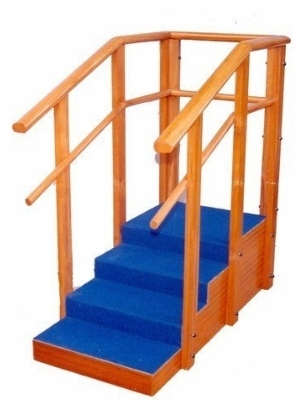

Price:
- 50
- 100
- 200
- 250
- 500
- 1000+
More Products in Physiotherapy Equipment Category
Textured Tactile Sensor Wall Panel
Price 4500 INR / Piece
Minimum Order Quantity : 1 Piece
Portable : The product shown in the image is a multitextured tactile sensory wall panel, and it is designed to be wallmounted, not portable.
Age Group : Children, Adults, Women, Elders, Infants
Material : The primary material for the product is fabric and wood.
Display : Other
Manual Standing Positioner/ Prone Standing
Price 12000 INR / Piece
Minimum Order Quantity : 1 Piece
Portable : The presence of wheels on the frame makes the device portable, allowing it to be moved easily.
Age Group : Children, Adults, Women, Elders
Material : The standing positioner shown in the image is typically made of mild steel for the frame, with a wooden activity tray. Frame: The metal frame is often constructed from heavyduty mild steel square pipes and finished with a powder coating to provide durability and a clean appearance.Activity Tray: The detachable tray is usually made of wood with a natural polish finish.
Display : NIL
Motorized Standing Positioner / Prone Standing
Price 30000 INR / Piece
Minimum Order Quantity : 1 Piece
Portable : The object in the image is a standing positioner with an activity tray, often described as a "threeinone" product. Yes, this type of product is designed to be portable. Function: Manual standing positioners help patients transition to or maintain a standing position (prone, supine, or vertical) for various activities. Design: The device features a steel frame with multiple casters (wheels) for mobility. Usage: It is typically used for severely handicapped children to enable them to bear weight and improve circulation and mobility.
Age Group : Children, Adults, Women, Elders
Material : The product in the image is a standing positioner, which is typically constructed from the following materials:Frame: The main frame, including the base and vertical supports, is commonly made of mild steel or steel, often with a powdercoated finish for durability. Activity Tray: The detachable tray is usually constructed from wood with a natural polish finish. Support Components: Other parts, such as the padding, straps, and casters, are made from various materials like foam, fabric/strapping material, and possibly rubber or plastic for the wheels.
Display : NIL
Straight Exercise Staircase
Price 18000 INR / Piece
Minimum Order Quantity : 1 Piece
Portable : Yes
Age Group : Children, Adults, Women, Elders
Material : Other
Display : NIL
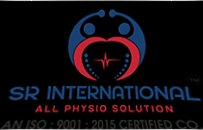

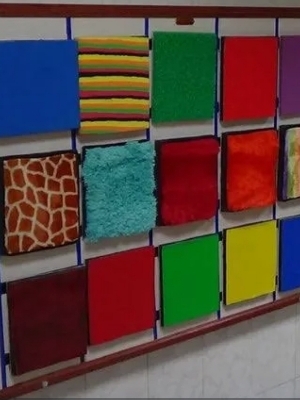
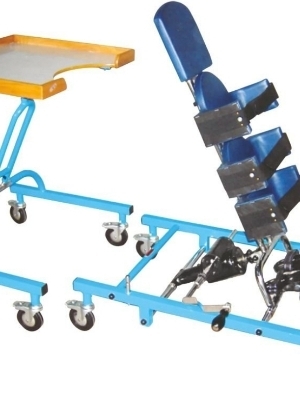
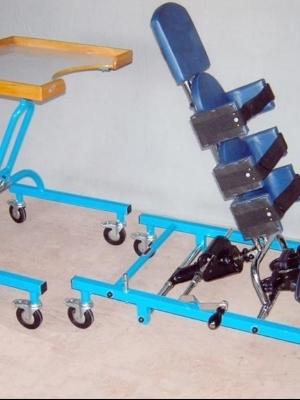



 Send Inquiry
Send Inquiry Send SMS
Send SMS